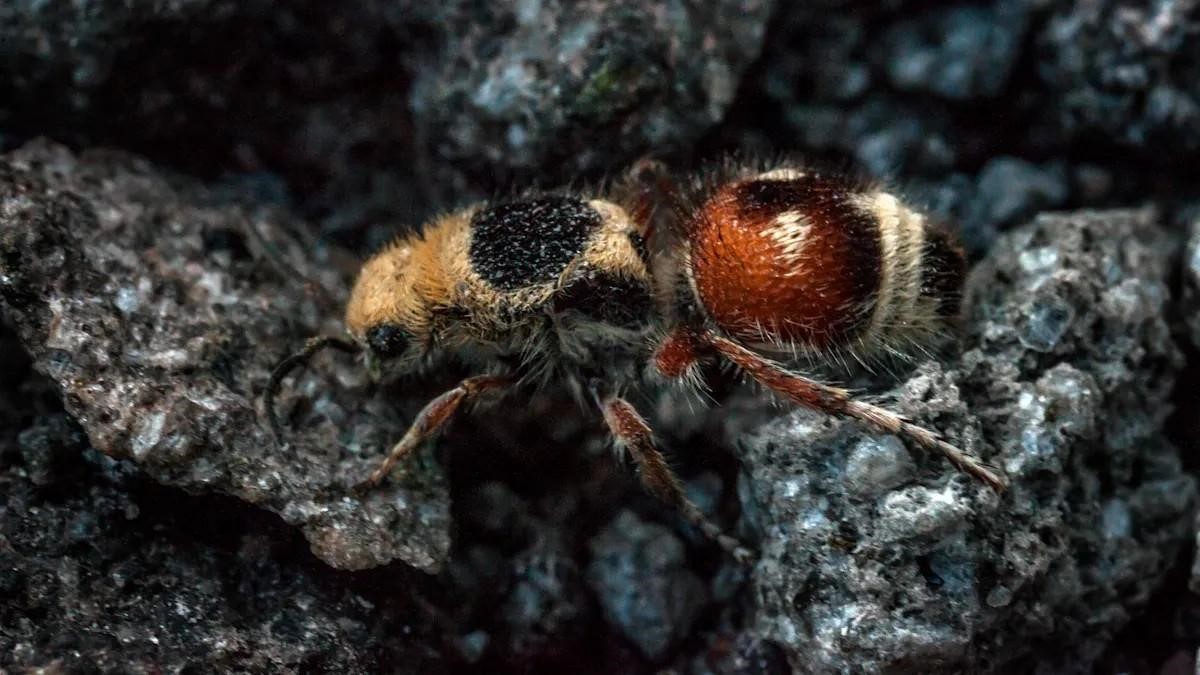Ultrablack Velvet Ant Discovered with Unique Pigmentation
Why in the news?
Scientists in Brazil discovered an ultrablack velvet ant species, Trauma mutilla bifurca, with light-absorbing pigmentation. This rare feature, unique among Hymenoptera, raises questions about its evolutionary purpose and defense mechanisms, sparking scientific curiosity.
Discovery of the Ultrablack Brazilian Velvet Ant:
- Velvet ants, despite their name, are actually wasps.
- The species Trauma mutilla bifurca found in Brazil displays ultrablack pigmentation, as confirmed by scientists led by Vinicius Lopez from the Federal University of Triângulo Mineiro.
- This ultrablack shade absorbs almost all visible and ultraviolet light, making it unique among Hymenoptera (bees, wasps, and ants).
Mechanism Behind Ultrablack Pigmentation
- The ultrablack coloration is achieved through microstructures beneath a dense layer of hair, resembling stacked platelets like book pages.
- These structures swallow nearly all incoming light, creating the matte black appearance.
- Such pigmentation is rare and can serve various functions in nature, like camouflage, temperature regulation, or mate attraction through high contrast with brighter colors.
Mystery of the Ultrablack Trait
- Predators typically avoid velvet ants due to their hard exoskeletons, painful stings, and screeches, making it unclear if ultrablack pigmentation aids in camouflage.
- The ultrablack feature is only observed in females, adding to the mystery of its evolutionary purpose.
- Researchers speculate that the pigmentation might act as an additional defense mechanism against predators that detect ultraviolet light.
- The findings, published in the Beilstein Journal of Nanotechnology, highlight the unique adaptations of this species.
Sources Referred:
PIB, The Hindu, Indian Express, Hindustan Times




